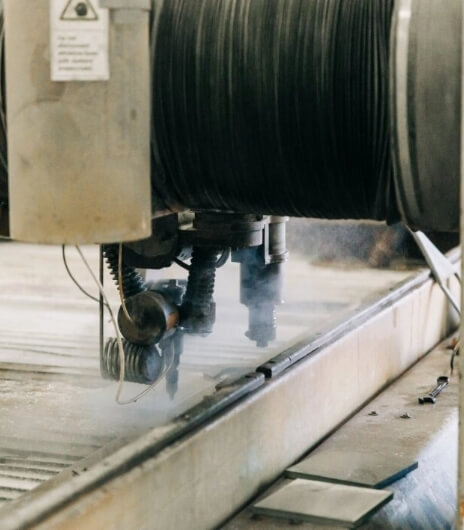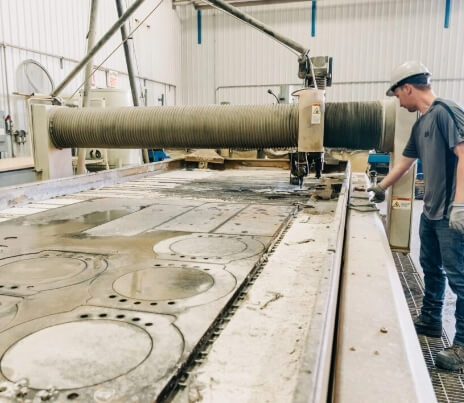Waterjet cutting is a versatile and precise metal processing method that utilizes a high-pressure stream of water mixed with abrasive particles to cut through various materials. The process involves pressurizing the water to extremely high levels and directing it through a small nozzle, creating a focused jet of water that can erode and cut through the material.
Waterjet cutting is favoured for its ability to produce intricate shapes, sharp corners, and smooth finishes, making it a preferred choice in aerospace, automotive, and architecture industries.

Share Your Cutting Requirements
Contact us with details about your project, including the type of material, thickness, dimensions, and specific cutting requirements. Our team will assess your needs to determine the best approach for your waterjet cutting project.
Receive a Custom Quote
Based on the provided information, we’ll offer a customized quote outlining pricing and timelines for your waterjet cutting project. Our goal is to ensure transparency and alignment with your expectations.
Proceed with Plate Rolling
Upon approval, we initiate the waterjet cutting process using our advanced equipment, delivering precise and clean cuts promptly and to your exact specifications.

OMAX 80x-1 Dual Head Cutting System 60,000 PSI P
What do you get when you have a machine that can force a gallon of water and over a pound of abrasive sand every minute through a hole the size of a pinpoint at Mach 3? A machine that will cut or etch the most intricate designs in virtually any material you like (steel, titanium, marble, glass, plastic, rubber, carbon fibre, brass, even wood) up to 6 inches thick!
Waterjet cutting works by pressurizing water to high levels and forcing it through a small nozzle to create a concentrated water jet. Waterjet cutting utilizes a high-pressure stream of water, sometimes mixed with abrasive particles, to erode and cut through a wide range of materials, including metals, ceramics, and composites while maintaining the material’s integrity.

Waterjet cutting is a versatile and precise metal processing method that utilizes a high-pressure stream of water mixed with abrasive particles to cut through various materials. The process involves pressurizing the water to extremely high levels and directing it through a small nozzle, creating a focused jet of water that can erode and cut through the material.
Waterjet cutting is preferred in the aerospace, automotive, and architecture industries because it can produce intricate shapes, sharp corners, and smooth finishes.
This technology is versatile and capable of cutting steel, titanium, marble, glass, plastics, rubber, carbon fiber, brass, and even wood up to 6 inches thick.
Our OMAX 80X-1 Dual Head Cutting System can handle maximum cut sizes of 6’4” x 16’6”, and materials up to 6.5 inches thick, except for tempered glass, with a precision of +/- 0.005”.
The waterjet cutting process maintains the integrity of materials like metals, ceramics, and composites by cutting without generating heat, thus preventing material distortion, weakening, or changes in properties. This cold-cutting method allows for precise, clean cuts without thermal stress, making it ideal for materials sensitive to high temperatures.